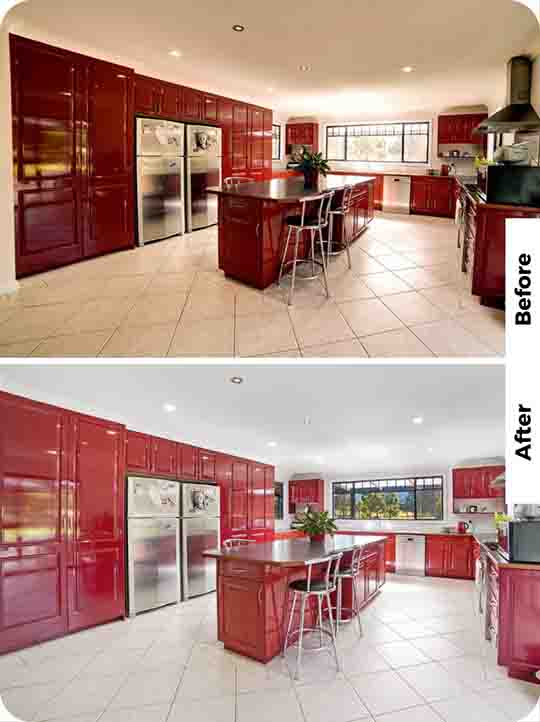Top 10 Common Real Estate Photo Editing Mistakes
In today’s digital world, real estate professionals must take advantage of every opportunity to showcase their properties online. One of the most important aspects of presenting a property online is the use of high-quality photos. In fact, according to the National Association of Realtors, 87% of homebuyers find photos to be the most important feature of online listings. This highlights the importance of real estate photo editing, but there are common mistakes that must be avoided in order to produce the best possible images.
In this Blog, we will outline the common real estate photo editing mistakes to avoid and provide guidance on how to produce high-quality images that will showcase properties in the best possible light.
Table of Contents
Mistake #1: Over-Editing
Over-editing is the most common mistake in real estate photo editing. It is important to keep in mind that the goal of photo editing is to enhance the features of the property and not to change them. Over-editing can create an unrealistic portrayal of the property and can result in misleading potential buyers.
Examples of over-edited photos include those with unnatural colors, heavily manipulated shadows and highlights, and excessively sharp or blurry images. These edits can be distracting and can detract from the true beauty of the property.
It is important to find a balance between enhancing the property’s features and keeping the edits subtle and realistic. This can be achieved by using editing software that provides basic adjustments such as brightness and contrast and avoiding the use of extreme filters.
Mistake #2: Inconsistent Lighting
Inconsistent lighting can be a major issue in real estate photo editing. A property with uneven lighting can appear unappealing and uninviting. Inconsistent lighting can be caused by a variety of factors such as natural lighting, indoor lighting, and camera settings.
Examples of photos with inconsistent lighting include those with shadows that are too dark or highlight that are too bright. This can make it difficult for potential buyers to accurately visualize the property.
To avoid inconsistent lighting, it is important to take photos during the optimal time of day when natural light is abundant. Additionally, using a camera with adjustable settings can help to balance the lighting and produce high-quality images.
Mistake #3: Incorrect White Balance
White balance is an important aspect of real estate photo editing. It is used to balance the color temperature of a photo, ensuring that whites appear white and not yellow or blue. An incorrect white balance can make a property appear cold and uninviting.
Examples of photos with incorrect white balance include those with yellow or blue tints. This can create an unrealistic portrayal of the property and mislead potential buyers.

To avoid incorrect white balance, it is important to adjust the white balance settings on the camera or editing software. Additionally, shooting in RAW format can provide greater control over the white balance in post-production.
Mistake #4: Poor Composition
Composition is an important aspect of real estate photography. It is the arrangement of elements within a photo to create a visually appealing and balanced image. The poor composition can make a property appear cluttered and uninviting.
Examples of photos with poor composition include those with crooked or tilted angles, too much or too little negative space, and awkward positioning of objects.
To avoid poor composition, it is important to follow the basic rules of composition such as the rule of thirds, leading lines, and balance. Additionally, taking the time to carefully plan the shot and adjust the camera settings can ensure a well-composed image.
Mistake #5: Inappropriate Use of Filters
Filters can be a useful tool in real estate photo editing, but they must be used appropriately. Inappropriate use of filters can make a property appear unrealistic and uninviting.
Examples of photos with inappropriate use of filters include those with overly-saturated colors or heavy vignettes. These filters can make the property look like it’s from a different time or place, and can detract from the true beauty of the property.
To avoid inappropriate use of filters, it is important to use them sparingly and only when they enhance the image. It is also important to choose filters that are appropriate for the property and its style. Neutral filters, such as a slight increase in contrast or saturation, can be a good option for real estate photos.
Mistake #6: Ignoring the Importance of Professional Editing
Professional photo editing can make a significant difference in the quality of real estate photos. Ignoring the importance of professional photo editing can result in lower-quality images that fail to showcase the property’s true beauty.
Examples of photos edited by professionals include those with enhanced lighting, color correction, and attention to detail. These edits can make the property appear more inviting and can highlight its unique features.
To ensure high-quality images, it is important to work with a professional photo editor who has experience in real estate photography. They can provide the necessary skills and tools to enhance the images and make them stand out.
Mistake #7: Neglecting to Address Distorted Images
Distorted images can be a major issue in real estate photography. They can make a property appear uninviting and can make it difficult for potential buyers to accurately visualize the property.
Examples of photos with distortion include those with a fisheye effect or a skewed perspective. These distortions can make the property appear warped and unrealistic.
To avoid distorted images, it is important to use a camera with a wide-angle lens that is specifically designed for real estate photography. Additionally, correcting distortion in post-production can help to ensure that the images accurately reflect the property.
Mistake #8: Failing to Correct Vertical Lines
Correct vertical lines are important in real estate photography. Vertical lines that appear tilted or crooked can make a property appear unbalanced and uninviting.

Examples of photos with incorrect vertical lines include those with walls that appear to be leaning or doors that appear to be crooked. These mistakes can be distracting and can detract from the true beauty of the property.
To avoid incorrect vertical lines, it is important to take the time to properly adjust the camera settings and to correct any issues in post-production. This can ensure that the property appears balanced and inviting.
Mistake #9: Disregarding the Importance of Quality Images
High-quality images are essential in real estate photography. Disregarding the importance of quality images can result in lower-quality images that fail to showcase the property’s true beauty.
Examples of low-quality images include those that are blurry or pixelated. These images can make the property appear uninviting and can make it difficult for potential buyers to accurately visualize the property.
To ensure high-quality images, it is important to use a camera with a high resolution and to properly adjust the camera settings. Additionally, using editing software that provides basic adjustments can help to enhance the images and make them stand out.
Mistake #10: Not Paying Attention to Detail
Paying attention to detail is important in real estate photography. Neglecting to pay attention to detail can result in lower-quality images that fail to showcase the property’s true beauty.
Examples of photos with a lack of attention to detail include those with cluttered backgrounds, unmade beds, and dirty dishes in the kitchen. These details can be distracting and can detract from the true beauty of the property.
To ensure attention to detail, it is important to take the time to carefully inspect each photo before and after taking it. Additionally, working with a professional photographer or real estate agent can help to ensure that the property is properly staged and prepared for photography.
Correct your real estate photo editing mistakes with PixelShouters
PixelShouters is a photo editing company that offers professional photo editing services to help improve the quality of your photos. They provide customized editing solutions tailored to your specific needs, ensuring high-quality results using the latest editing software and techniques. With a quick turnaround time, PixelShouters can help you achieve your photo editing goals and make your images more appealing to potential buyers.
Conclusion
In conclusion, real estate photo editing is an essential part of the real estate industry. It can make a significant difference in how a property is perceived and can help to showcase its true beauty. However, there are common mistakes that should be avoided to ensure that the photos accurately reflect the property and attract potential buyers.
Avoiding these mistakes can be achieved by properly preparing the property, using appropriate camera settings, and working with a professional photo editor. Attention to detail and a focus on quality images can also ensure that the photos accurately reflect the property and attract potential buyers.
Real estate photo editing is a valuable tool for the industry, but it must be used correctly to achieve its full potential. By avoiding these common mistakes and focusing on high-quality images, real estate professionals can showcase properties in their best light and attract potential buyers.

[…] Introduction to the importance of avoiding common mistakes in real estate photo editing […]